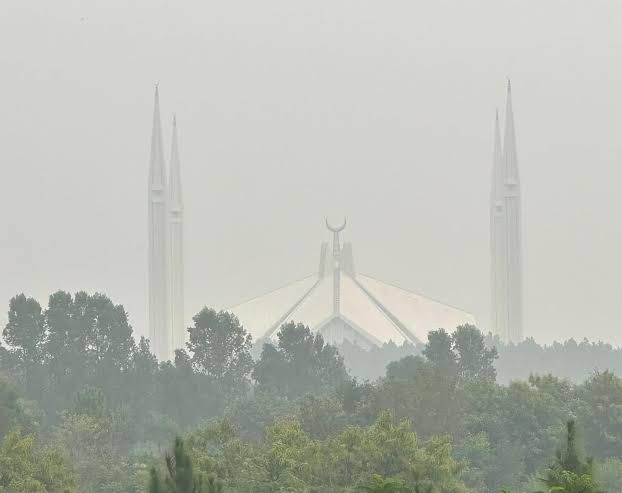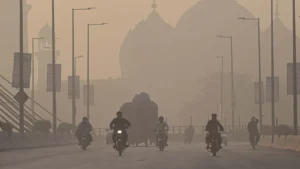Islamabad, Dec 31: Over the past Few months, Islamabad’s air quality index has Fluctuated between unhealthy and very unhealthy, according to data shared by the Pakistan Environmental Protection Agency (Pak-EPA). Talking to Bloom Pakistan, Coordinator to the Prime Minister on Climate change Romina Khursheed Alam highlighted that the main culprits were vehicle emissions, industrial pollution, construction dust and the open burning of waste and crop residue.
According to MoCC the CDA’s ongoing construction projects, including the widening of Park Road as well as the construction of new flyovers, were contributing to increased traffic congestion and air pollution. The Pak-EPA had urged relevant authorities to implement measures to mitigate emissions and control dust pollution from these projects.
Pakistan Environmental Protection Agency (Pak-EPA) Director Dr Zaigham Abbas attributed this to large-scale construction projects and increasing vehicular emissions, resulting in hazardous air quality for the residents of Islamabad.
Dr Zaigham Abbas highlighted that the surge in air pollution was primarily driven by extensive development projects across the city, such as the ongoing high-rise constructions along the Blue Area belt, the Park Road extension, and simultaneous work at the Serena and PTCL interchanges.
Dr Abbas noted that old, heavy machinery dumper trucks, excavators, and tractors had been operating round the clock to meet deadlines, with inadequate measures in place to control pollution. As a result, the Air Quality Index (AQI) reached 182 micrograms per cubic meter on average. The AQI indicates the current level of air pollution and its potential impact on health.
Dr Zaigham Abbas also told that next month, Pak-EPA would install air monitoring units at six to seven locations to monitor air pollution in the city.In November, Pak-EPA repeatedly warned that children, the elderly, and asthma patients must wear masks when stepping into the open due to unhealthy to very unhealthy air quality. On mid of December , AQI was the highest, reaching 231 micrograms per cubic meter (ug/m3) on average, with particulate matter (PM) 2.5 reaching 1182ug per cubic meter.
Author: Usman Ch









